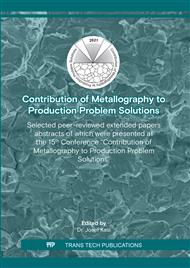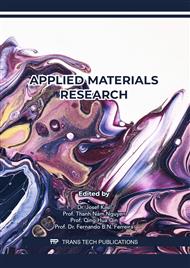p.107
p.113
p.119
p.127
p.133
p.139
p.147
p.157
p.163
Analysis of the Causes of Shaft Damage
Abstract:
The paper deals with complex material analysis of a shaft after failure. The shaft was operated as part of an "Abradable rig" device used to test the resistance of coatings at high speeds, which simulates a turboprop engine's operating conditions. The shaft is made of 16MnCr5 material with subsequent cementation. The subject of interest is a complex material analysis (i.e. control of the chemical composition of the material and complete fractographic and metallographic analysis) and verification of the shaft design. The aim of the study is a precise determination of the specific cause of component failure.
Info:
Periodical:
Pages:
133-138
Citation:
Online since:
June 2022
Authors:
Keywords:
Price:
Сopyright:
© 2022 Trans Tech Publications Ltd. All Rights Reserved
Share:
Citation:



